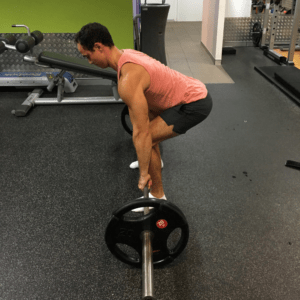Deadlifts are one exercise commonly used for developing muscle mass and burning fat. They work your glutes, quads, hamstrings, back extensors, lats and traps, just to name a few. In most cases deadlifts can be performed by anyone, the young, elderly and everyone in-between. You don’t have to be a competitive powerlifter to start deadlifting. Performed correctly, the deadlift is actually a very safe exercise and can be utilised as part of an injury prevention or injury rehabilitation programme under the guidance of your Physio.
To incorporate this move into your programme, read on.
To start there are 3 main types of deadlifts, all with different stances and slightly different technique required.
- The Conventional deadlift
- The Romanian or stiff leg deadlift
- The Sumo Deadlift
We are going to focus on the conventional deadlift, as it is the most commonly performed of the three.
Foot Position
Stance width will vary from person to person depending on your individual anatomy, i.e. the angle your femur (thigh bone) sits in your acetabulum (socket of your pelvis) will vary this. However, a general rule would be to stand in a similar position you would use to do a maximal vertical jump – this may be hip width or slightly wider. Ideally deadlifts should be done barefoot, otherwise in a flat shoe. If your shoe has a lift this will put you at a biomechanical disadvantage, and either cause rounding of your lumbar spine or forward displacement of your knees increasing shear forces through your back and knee joints.
-The bar should be roughly over the top of the middle of your feet
-Shins should be at 90 degrees
-Hands placed just outside of your shins
-Hand placement should be double overhand (both palms facing downwards), this is best for beginners and helps with the next step. Note: there are other grip options for more advanced lifters
-Shoulder blades should be over the top of the bar
-Head and neck in a neutral position (don’t look down at the bar or too far forward)
This will keep the bar in a straight line and allow you to generate maximum force.
Activate your Lats
Before lifting the weight up, you need to pull the slack out of the bar by switching on your lats (the big back muscle). This will prevent your back from rounding and allow you to keep the bar as close to your body throughout the movement. As above, your hands should be double overhand, grip the bar tight and try and bend it in half – this will activate your lats and help you keep the above position throughout the movement.
For more information on Deadlifts read on to “Deadlift Guide – The Lift“.






